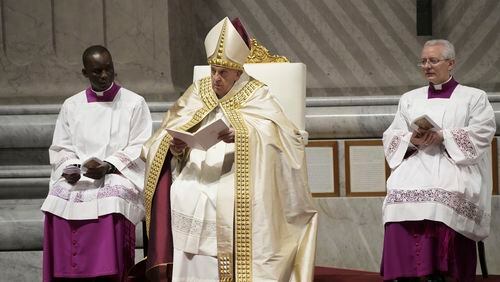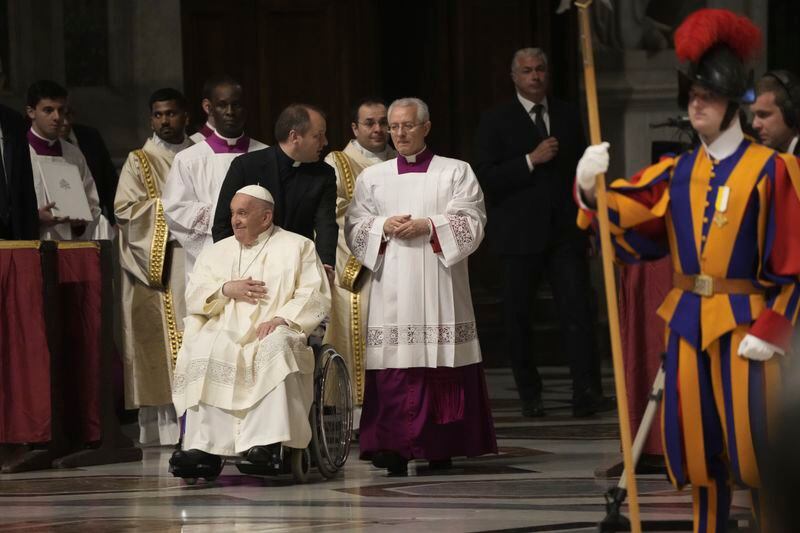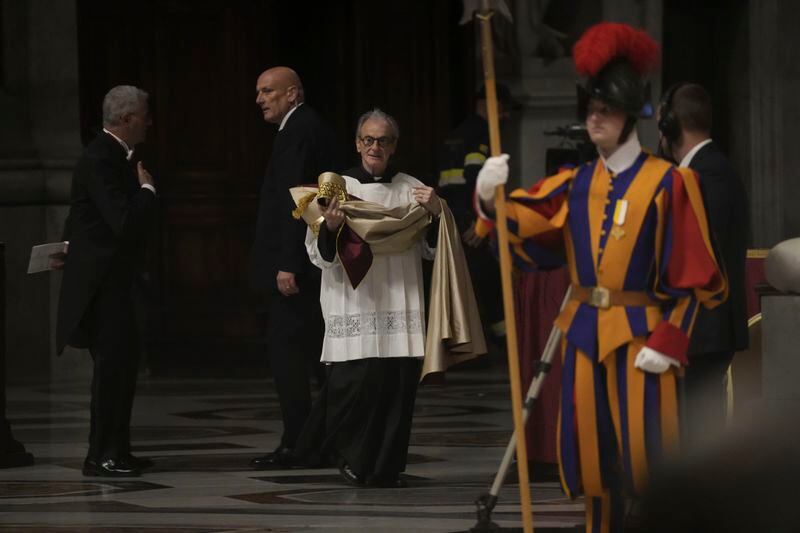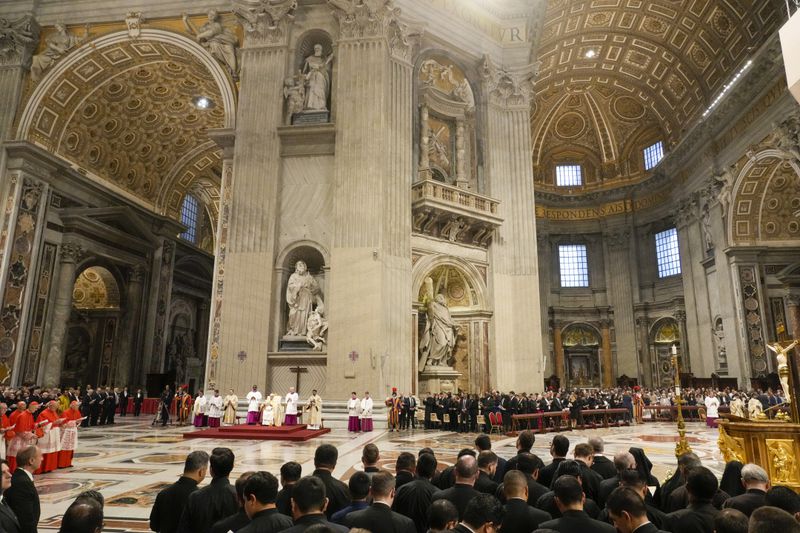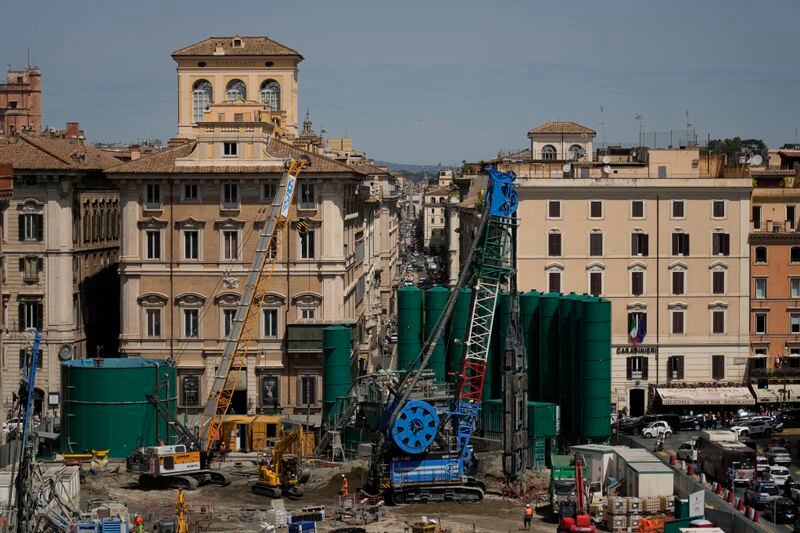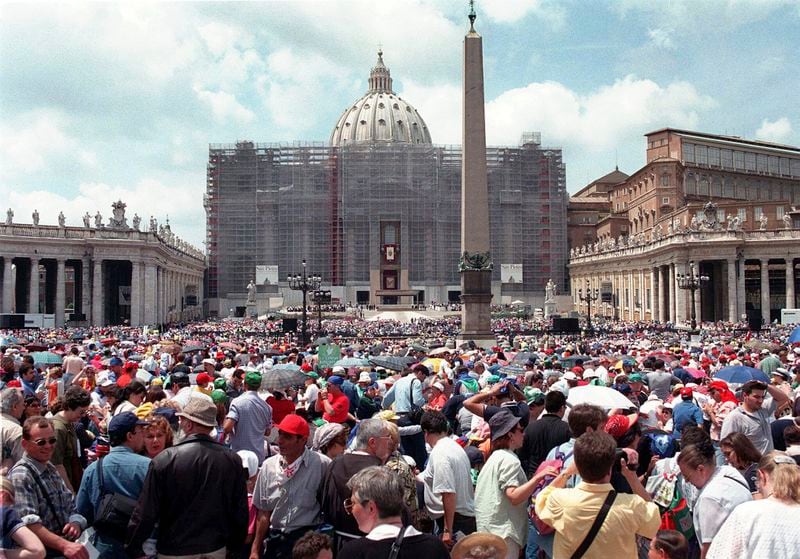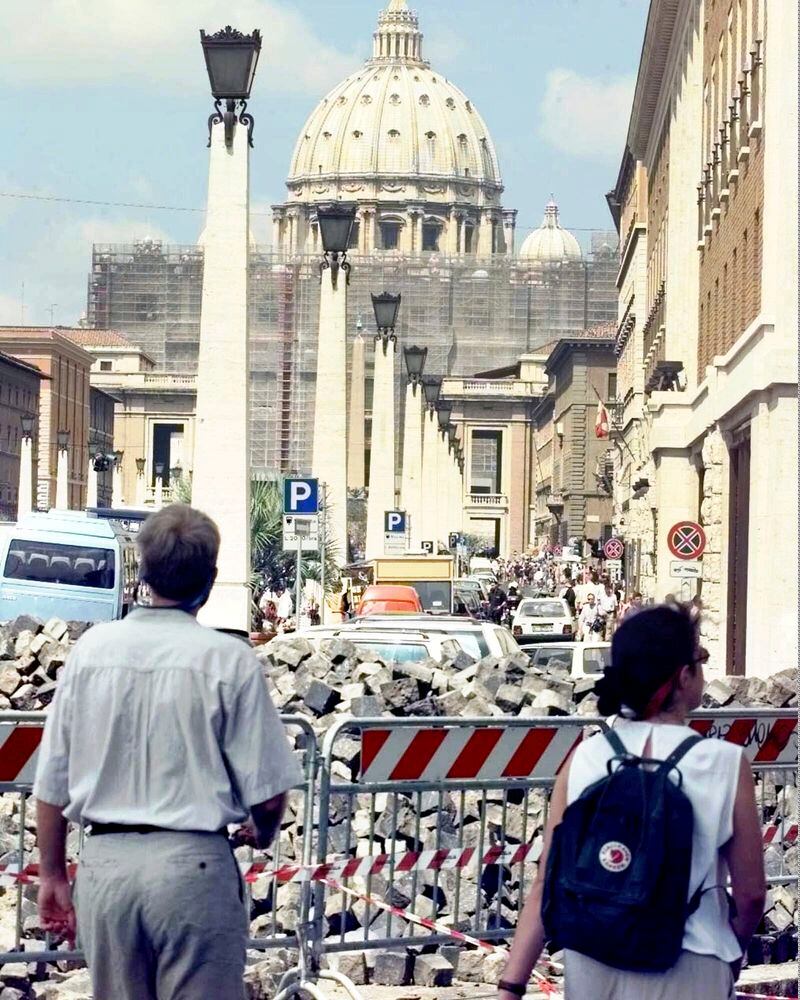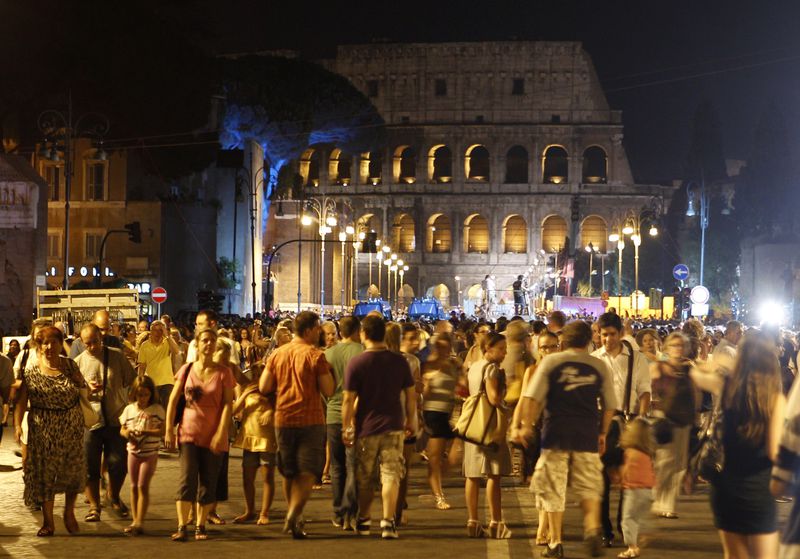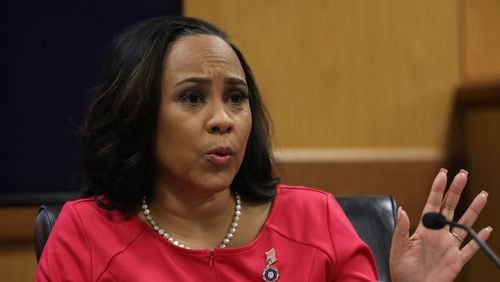VATICAN CITY (AP) — The Vatican crossed a key milestone Thursday in the runup to its 2025 Jubilee with the promulgation of the official decree establishing the Holy Year. It's a once-every-quarter-century event that is expected to bring some 32 million pilgrims to Rome and has already brought months of headaches to Romans.
Pope Francis presided over a ceremony in the atrium of St. Peter's Basilica for the reading of the papal bull, or official edict, that laid out his vision for a year of hope: He asked for gestures of solidarity for the poor, prisoners, migrants and Mother Nature.
“Hope is needed by God’s creation, gravely damaged and disfigured by human selfishness,” Francis said in a vigil service afterward. “Hope is needed by those peoples and nations who look to the future with anxiety and fear.”
The pomp-filled event, attended by cardinals, bishops and ordinary faithful, kicked off the final seven-month dash of preparations and public works projects to be completed by Dec. 24, when Francis opens the basilica’s Holy Door and formally inaugurates the Jubilee.
In a novelty, Francis announced in the papal bull that he would also open a Holy Door in a prison "as a sign inviting prisoners to look to the future with hope and a renewed sense of confidence."
For the Vatican, the Holy Year is a centuries-old tradition of the faithful making pilgrimages to Rome to visit the tombs of Saints Peter and Paul, and receiving indulgences for the forgiveness of their sins in the process. For the city of Rome, it's a chance to take advantage of some 4 billion euros ($4.3 billion) in public funds to carry out long-delayed projects to lift the city out of years of decay and neglect.
“In a beautiful city, you live better,” said the Vatican’s Jubilee point-person, Archbishop Renato Fisichella, who himself is not indifferent to the added bonus of Jubilee funding. “Rome will become an even more beautiful city, because it will be ever more at the service of its people, pilgrims and tourists who will come.”
Pope Boniface VIII declared the first Holy Year in 1300, and now they are held every 25 years. While Francis called an interim one devoted to mercy in 2015, the 2025 edition is the first big one since St. John Paul II's 2000 Jubilee, when he ushered the Catholic Church into the third millennium.
As occurred in the runup to 2000, pre-Jubilee public works projects have overwhelmed Rome, with flood-lit construction sites operating around the clock, entire swaths of central boulevards rerouted and traffic snarling the city's already clogged streets.
The Tiber riverfront for much of the city center is now off limits as work crews create new parks. Piazzas are being repaved, bike paths charted and 5G cells built. The aim is to bring the Eternal City up to par with other European capitals and take advantage of the 1.3 billion euros ($1.4 billion) in special Jubilee funding and some 3 billion euros ($3.2 billion) more in other public and post-pandemic EU funds that are available.
“It's really putting our patience to the test,” said Tiziana Cafini, who operates a tobacco shop near the Pantheon and says she has taken to walking to work rather than riding a bus into the city center because it gets stuck in traffic. “And it's not just in the center. There are an infinite number of construction sites all around Rome.”
Though she knows the discomfort will be worth it in the end, the end is still pretty far off. In addition to the Jubilee construction, there's a longer-term, separate project to extend Rome’s Metro C subway line into Rome’s historic center which has encountered years of delays thanks to archaeological excavations of ancient Roman ruins that must be completed first.
For the next four years at least, central Piazza Venezia and its Imperial Forum-flanked boulevard to the Colosseum are scheduled to be congested and blighted by giant, 14-meter (yard) high green silos that are needed for the subway drilling operation.
“We're upset, but we're Romans, we'll make do,” Cafini said.
Rome Mayor Roberto Gualtieri said recently he was satisfied with the pace of the Jubilee works so far, noting that they got off to a months-delayed start due to the 2022 collapse of Premier Mario Dragi's government.
But Gualtieri promised they would be completed on time. And in a nod to Romans and tourists who have suffered from the traffic chaos and acute shortage of taxis already, he promised that an extra 1,000 taxi licenses had been approved and would be in use by December.
Yet as of late last month, only two of the 231 city projects had been completed; 57 were under way and another 44 were expected to be started by the end of May, Gualtieri told reporters. Another 18 are up for bids, seven have been assigned, 90 are planned. Thirteen have been canceled.
“We have recovered a lot from the initial delay,” Gualtieri told the foreign press association, adding that he expected the “essential” projects to be completed on time. Other projects were always planned to take longer than the Jubilee but were lumped into the overall project to take advantage of the accelerated timeframe.
The most significant project, and one that has caused the greatest traffic disruption to date, is a new Vatican-area piazza and pedestrian zone connecting Castel St. Angelo with the Via della Conciliazione boulevard that leads to St. Peter’s Square.
Previously, a major thoroughfare divided the two landmarks, causing an unsightly and pedestrian-unfriendly barrier.
The new works call for a tunnel to divert the oncoming traffic underneath the new pedestrian piazza. But that project required re-routing and replacing a huge underground sewage system first, which has only recently been completed. Now crews are working through the night to try to complete the tunnel in time.
Credit: AP
Credit: AP
Credit: AP
Credit: AP
Credit: AP
Credit: AP
Credit: AP
Credit: AP
Credit: AP
Credit: AP
Credit: AP
Credit: AP
Credit: AP
Credit: AP
Credit: AP
Credit: AP
Credit: AP
Credit: AP
